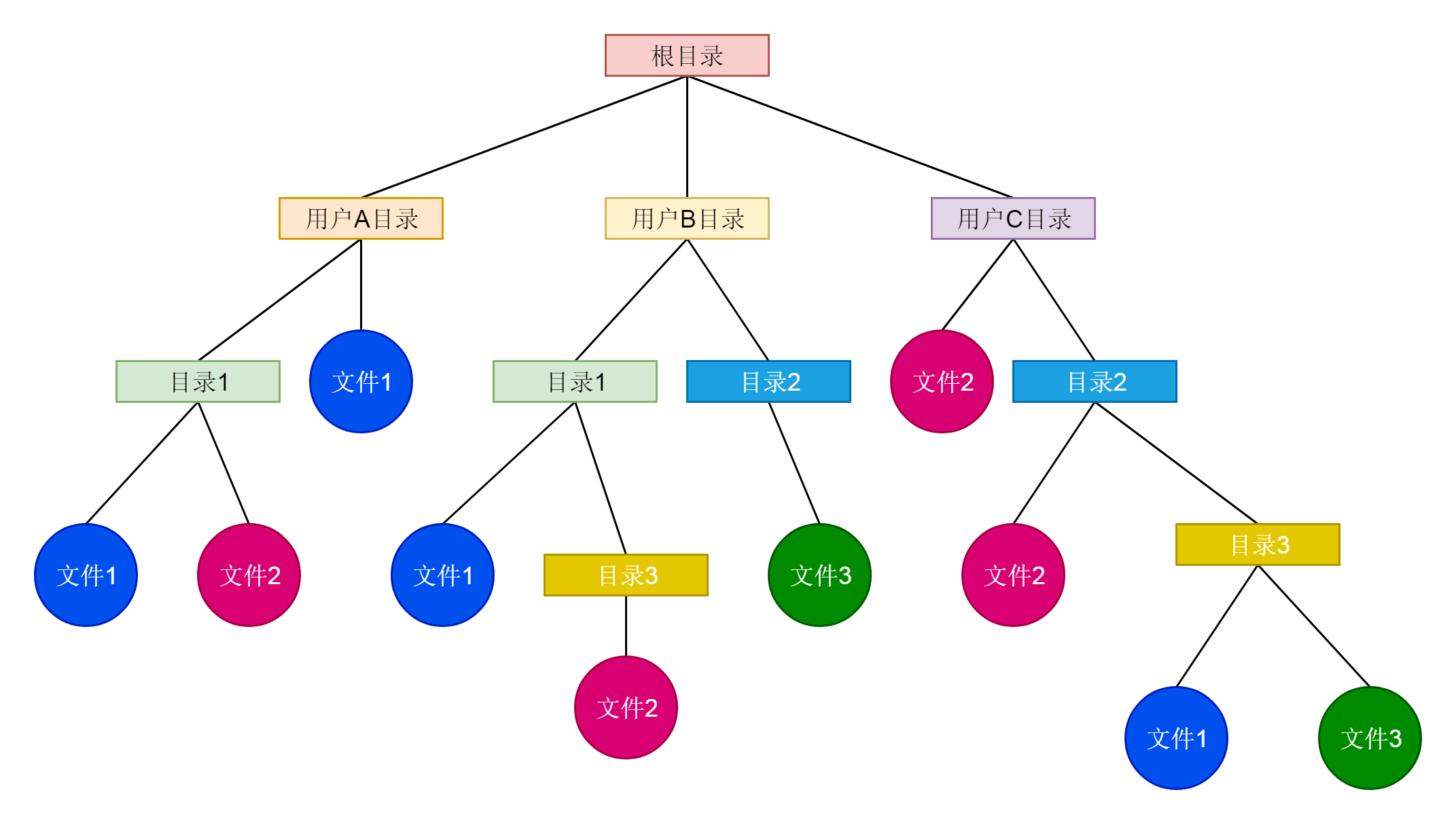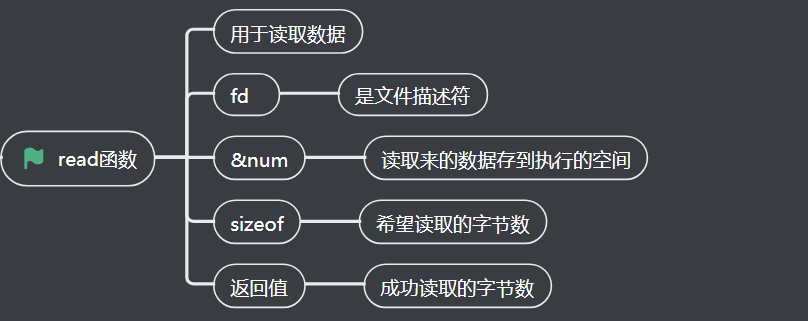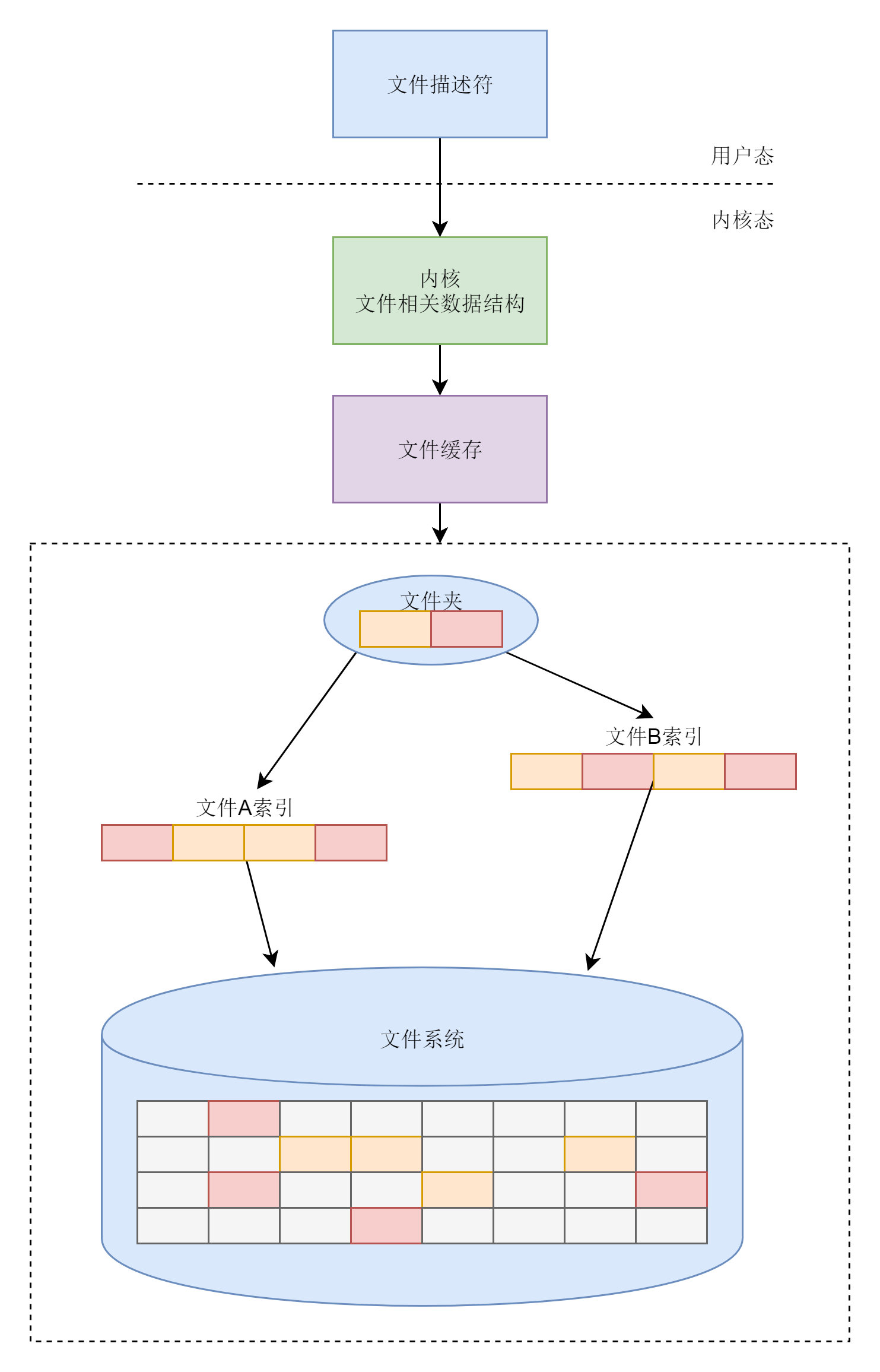一、文件系统的功能规划
1、引子
咱们花了这么长的时间,规划了会议室管理系统,这样多个项目执行的时候,隔离性可以得到保证。
但是,会议室里面被回收,会议室里面的资料就丢失了。有一些资料我们希望项目结束也能继续保存,
这就需要一个和项目运行生命周期无关的地方,可以永久保存,并且空间也要比会议室大的多。
2、图书馆和文件系统的故事

3、规划文件系统需要考虑的第一点

4、规划文件系统需要考虑的第二点


5、规划文件系统需要考虑的第三点

6、规划文件系统需要考虑的第四点

1、如何避免一定程度上的命名冲突问题
每个文件都有一个名字、这样我们访问一个文件,希望通过它的名字就可以找到
文件名就是一个普通的文本、当然文件名会经常冲突、不同用户取想用的名字的情况还是会经常出现的

如图所示,不同的用户的文件放在不同的目录下,虽然很多文件都叫“文件 1”,只要在不同的目录下,就不会有问题
7、规划文件系统需要考虑的第五点

二、文件系统的相关命令
1、首先是格式化
也即将一块盘使用命令组织成一定格式的文件系统的过程。咱们买个硬盘或者 U盘,经常说要先格式化,才能放文件,说的就是这个。
2、Linux下查看没有格式化的应硬盘信息
# fdisk -l Disk /dev/vda: 21.5 GB, 21474836480 bytes, 41943040 sectors Units = sectors of 1 * 512 = 512 bytes Sector size (logical/physical): 512 bytes / 512 bytes I/O size (minimum/optimal): 512 bytes / 512 bytes Disk label type: dos Disk identifier: 0x000a4c75 Device Boot Start End Blocks Id System /dev/vda1 * 2048 41943006 20970479+ 83 Linux Disk /dev/vdc: 107.4 GB, 107374182400 bytes, 209715200 sectors Units = sectors of 1 * 512 = 512 bytes Sector size (logical/physical): 512 bytes / 512 bytes I/O size (minimum/optimal): 512 bytes / 512 bytes
3、对磁盘进行格式化
mkfs.ext4 /dev/vdc fdisk /dev/vdc
4、挂在到目录
mount /dev/vdc1 / 根目录 / 用户 A 目录 / 目录 1
格式化后的硬盘,需要挂在到某个目录下面,才能作为普通的文件系统进行访问。
5、卸载挂载
umount / 根目录 / 用户 A 目录 / 目录 1
三、文件系统的相关系统调用
看完了命令行,我们来看一下,如何使用系统调用在操作文件?我们先来看一个完整的例子。
#include <stdio.h>
#include <stdlib.h>
#include <unistd.h>
#include <fcntl.h>
int main(int argc, char *argv[])
{
int fd = -1;
int ret = 1;
int buffer = 1024;
int num = 0;
if((fd=open("./test", O_RDWR|O_CREAT|O_TRUNC))==-1)
{
printf("Open Error
");
exit(1);
}
ret = write(fd, &buffer, sizeof(int));
if( ret < 0)
{
printf("write Error
");
exit(1);
}
printf("write %d byte(s)
",ret);
lseek(fd, 0L, SEEK_SET);
ret= read(fd, &num, sizeof(int));
if(ret==-1)
{
printf("read Error
");
exit(1);
}
printf("read %d byte(s),the number is %d
", ret, num);
close(fd);
return 0;
}
当使用系统调用open 打开一个文件时,操作系统会创建一些数据结构来表示这个被打开的文件下一节,我们就会看到这些。为了能够找到这些数据结构,在进程中,
我们会为这个打开的文件分配一个文件描述符 fd(File Descriptor)。文件描述符,就是用来区分一个进程打开的多个文件的,它的作用域就是当前进程,出了当前进程这个文件描述符就没有意义了
opne返回的fd必须记录好,我们队这个文件的所有操作都要靠这个fd,包括最后关闭文件
1、open函数

2、write函数

3、read函数

4、lseek函数

对于命令行来讲,通过 ls 可以得到文件的属性,使用代码怎么办呢?
我们下面三个函数,可以返回与打开的文件描述符相关的文件状态信息,这个信息将会写到类型为struct stat 的 buf 结构中。
int stat(const char *pathname, struct stat *statbuf);
int fstat(int fd, struct stat *statbuf);
int lstat(const char *pathname, struct stat *statbuf);
struct stat {
dev_t st_dev; /* ID of device containing file */
ino_t st_ino; /* Inode number */
mode_t st_mode; /* File type and mode */
nlink_t st_nlink; /* Number of hard links */
uid_t st_uid; /* User ID of owner */
gid_t st_gid; /* Group ID of owner */
dev_t st_rdev; /* Device ID (if special file) */
off_t st_size; /* Total size, in bytes */
blksize_t st_blksize; /* Block size for filesystem I/O */
blkcnt_t st_blocks; /* Number of 512B blocks allocated */
struct timespec st_atim; /* Time of last access */
struct timespec st_mtim; /* Time of last modification */
struct timespec st_ctim; /* Time of last status change */
};
5、stat和lstat的区别

接下来我们来看,如何使用系统调用列出一个文件夹下面的文件以及文件的属性
#include <stdio.h>
#include <stdlib.h>
#include <unistd.h>
#include <fcntl.h>
#include <sys/types.h>
#include <sys/stat.h>
#include <dirent.h>
int main(int argc, char *argv[])
{
struct stat sb;
DIR *dirp;
struct dirent *direntp;
char filename[128];
if ((dirp = opendir("/root")) == NULL) {
printf("Open Directory Error%s
");
exit(1);
}
while ((direntp = readdir(dirp)) != NULL){
sprintf(filename, "/root/%s", direntp->d_name);
if (lstat(filename, &sb) == -1)
{
printf("lstat Error%s
");
exit(1);
}
printf("name : %s, mode : %d, size : %d, user id : %d
", direntp->d_name, sb.st_mode, sb.st_size, sb.st_uid);
}
closedir(dirp);
return 0
}
6、opendir函数

7、readdir函数

8、closedir函数

到这里,你应该既会使用系统调用操作文件,也会使用系统调用操作目录了。下一节,我们开始来看内核如何实现的。
四、总结时刻
这一节,我们对文件系统的主要功能有了一个总体的印象,我们通过下面这张图梳理一下
1、在文件系统上,需要维护文件的严格的格式,要通过mkfs.ext4 命令来格式化为严格的格式。
2、每一个硬盘上保存的文件都要有一个索引,来维护这个文件珊国的数据块都保存在哪里
3、文件通过文件夹组织起来,可以方便用户使用
4、为了能够更快读取文件,内存里会分配一块空间最为缓存,让一些数据块放在缓存里面
5、在内核中,要有一整台的数据结构来表示打开的文件
6、在用户态,每个打开的文件都是一个文件描述符,可以通过各种文件相关的系统调用,操作这个文件描述符
